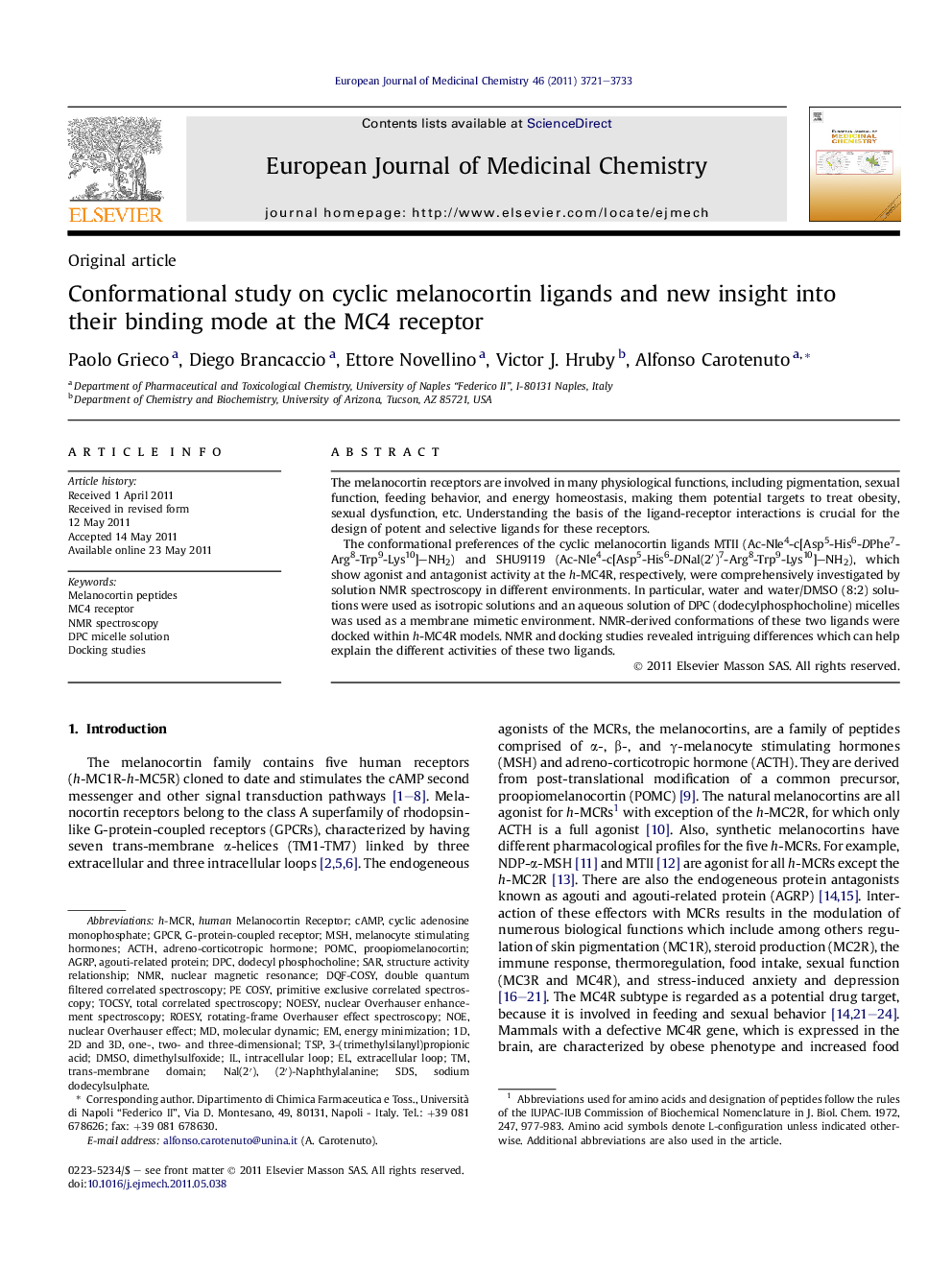| Article ID | Journal | Published Year | Pages | File Type |
|---|---|---|---|---|
| 1396132 | European Journal of Medicinal Chemistry | 2011 | 13 Pages |
The melanocortin receptors are involved in many physiological functions, including pigmentation, sexual function, feeding behavior, and energy homeostasis, making them potential targets to treat obesity, sexual dysfunction, etc. Understanding the basis of the ligand-receptor interactions is crucial for the design of potent and selective ligands for these receptors.The conformational preferences of the cyclic melanocortin ligands MTII (Ac-Nle4-c[Asp5-His6-DPhe7-Arg8-Trp9-Lys10]–NH2) and SHU9119 (Ac-Nle4-c[Asp5-His6-DNal(2′)7-Arg8-Trp9-Lys10]–NH2), which show agonist and antagonist activity at the h-MC4R, respectively, were comprehensively investigated by solution NMR spectroscopy in different environments. In particular, water and water/DMSO (8:2) solutions were used as isotropic solutions and an aqueous solution of DPC (dodecylphosphocholine) micelles was used as a membrane mimetic environment. NMR-derived conformations of these two ligands were docked within h-MC4R models. NMR and docking studies revealed intriguing differences which can help explain the different activities of these two ligands.
Graphical abstractThe preferred conformations of two cyclic melanocortin ligands was investigated by NMR spectroscopy. Their binding modes at the MC4 receptor was proposed.Figure optionsDownload full-size imageDownload as PowerPoint slideHighlights► We studied the conformations of the cyclic melanocortin ligands MTII and SHU9119. ► Solution NMR spectroscopy was applied in different environments. ► NMR-derived conformations of these two ligands were docked within h-MC4R models. ► We identified the main interactions between MC4 receptor and its peptide ligands. ► Intriguing differences can help explain the different activities of the two ligands.
